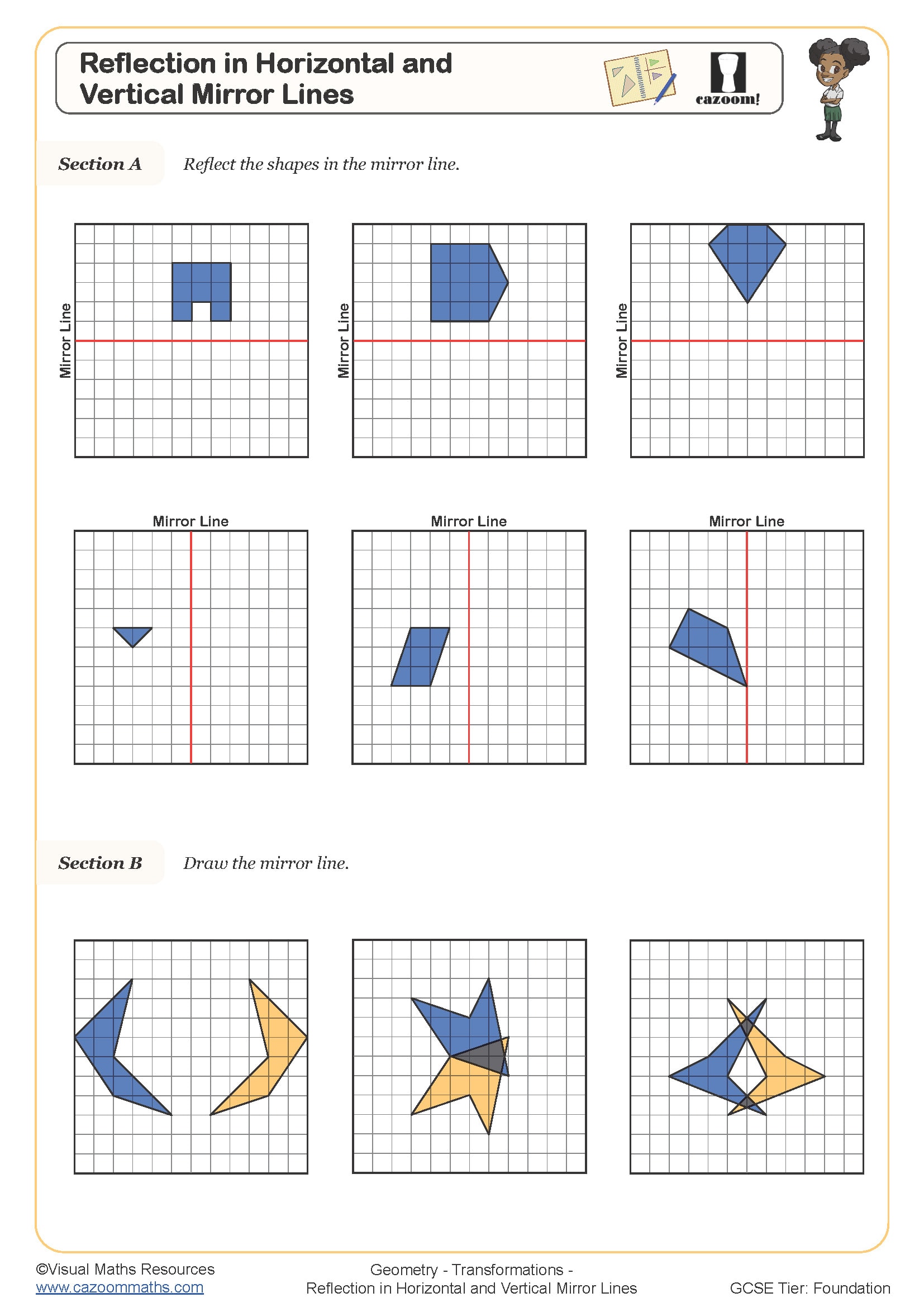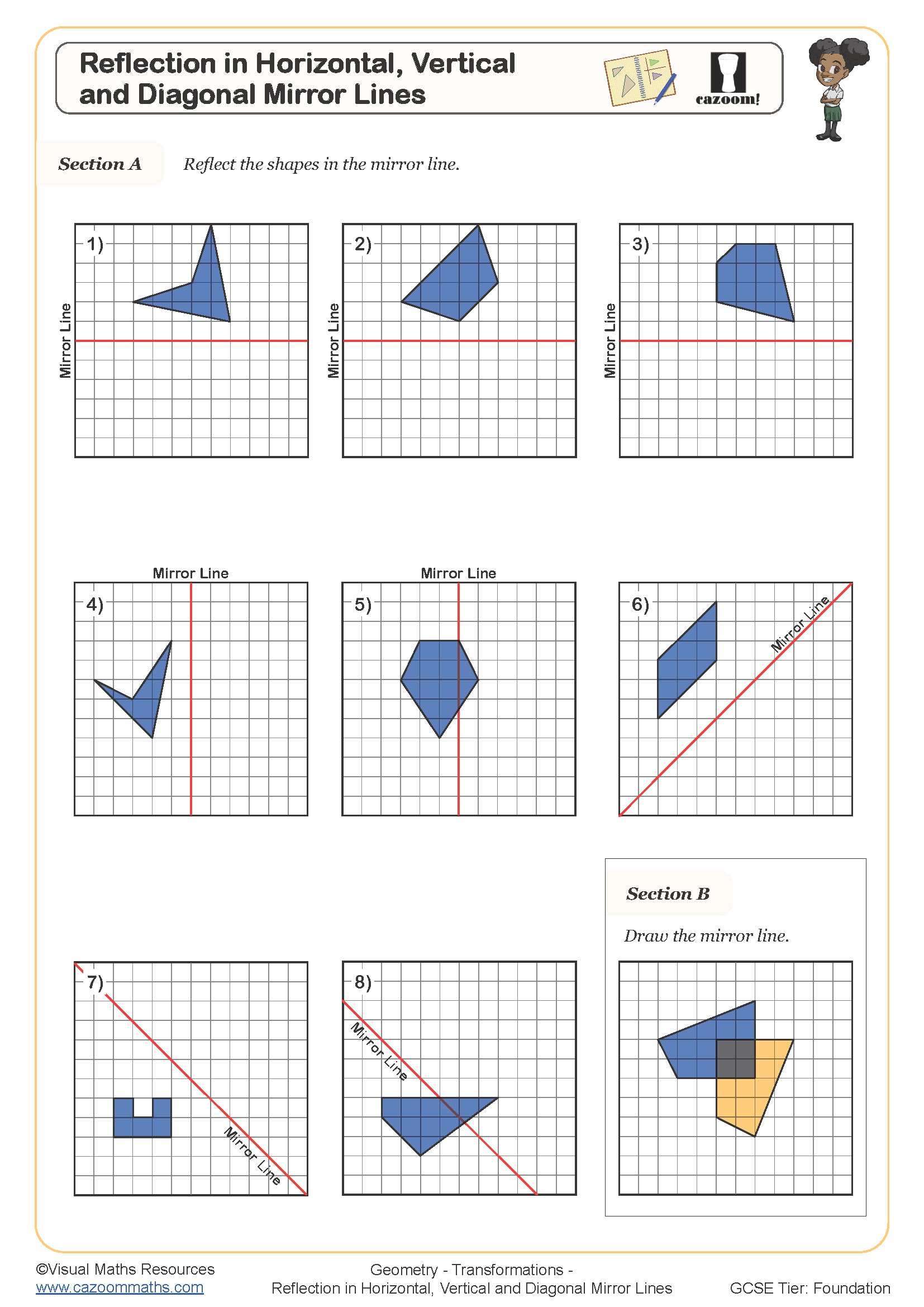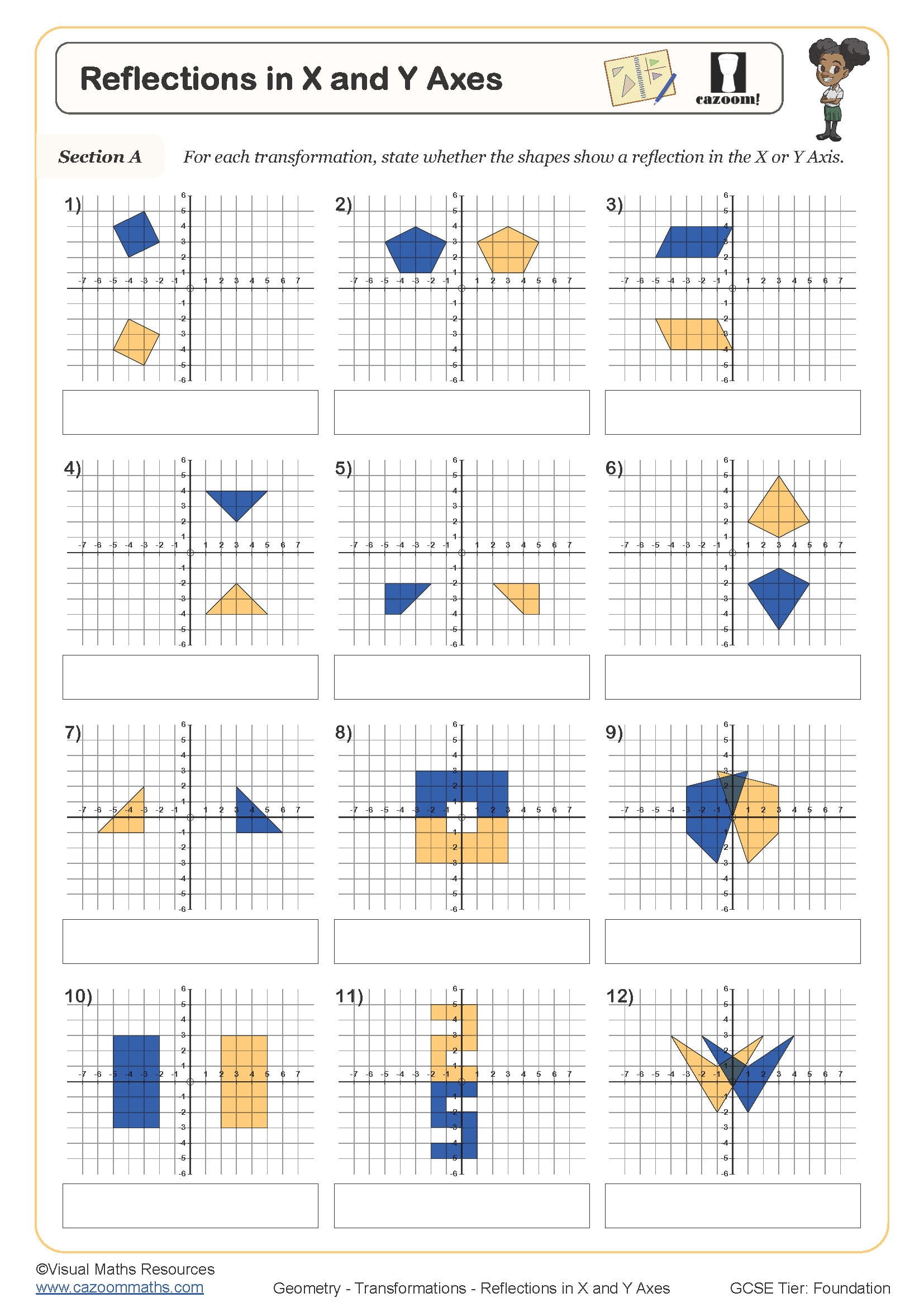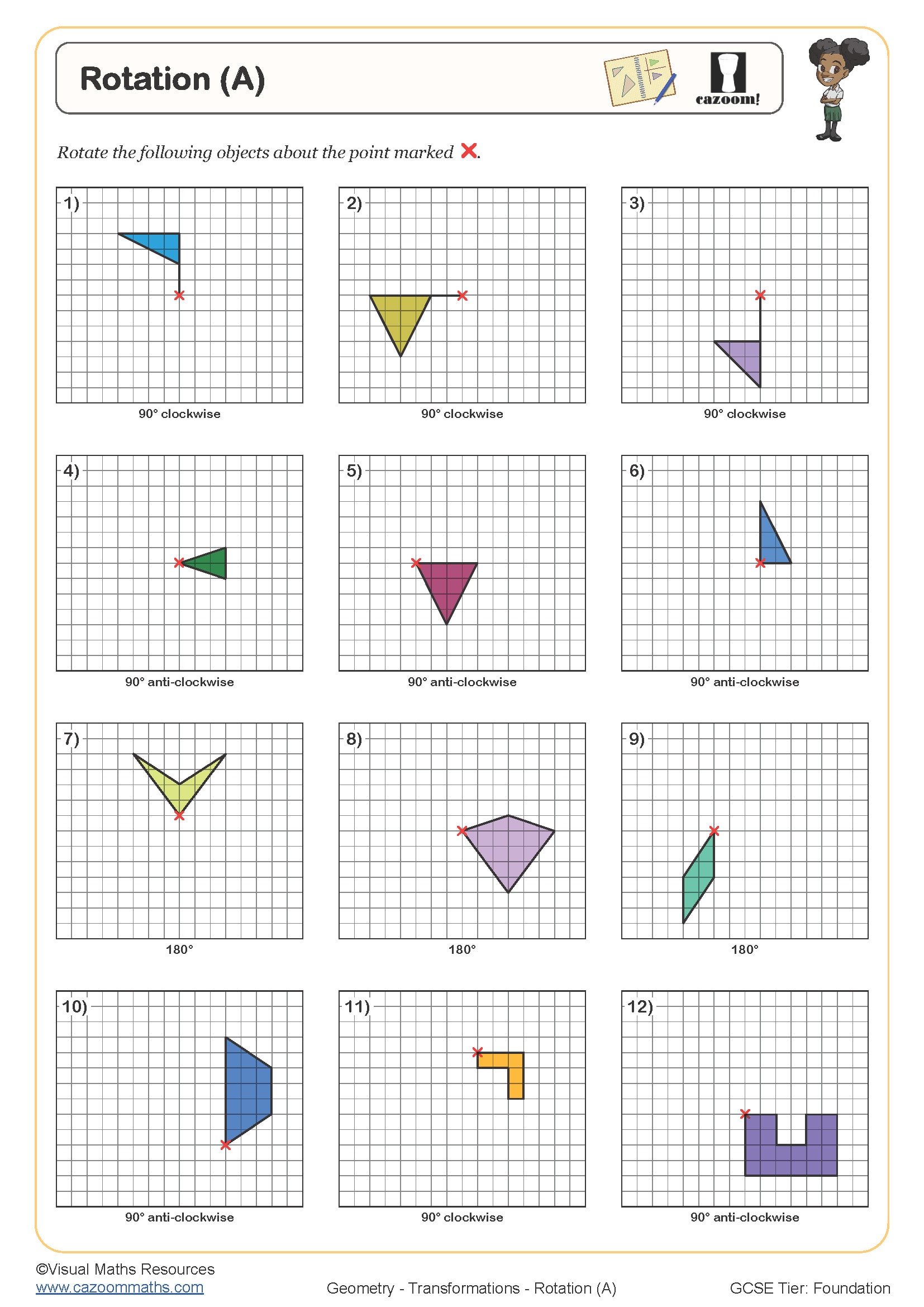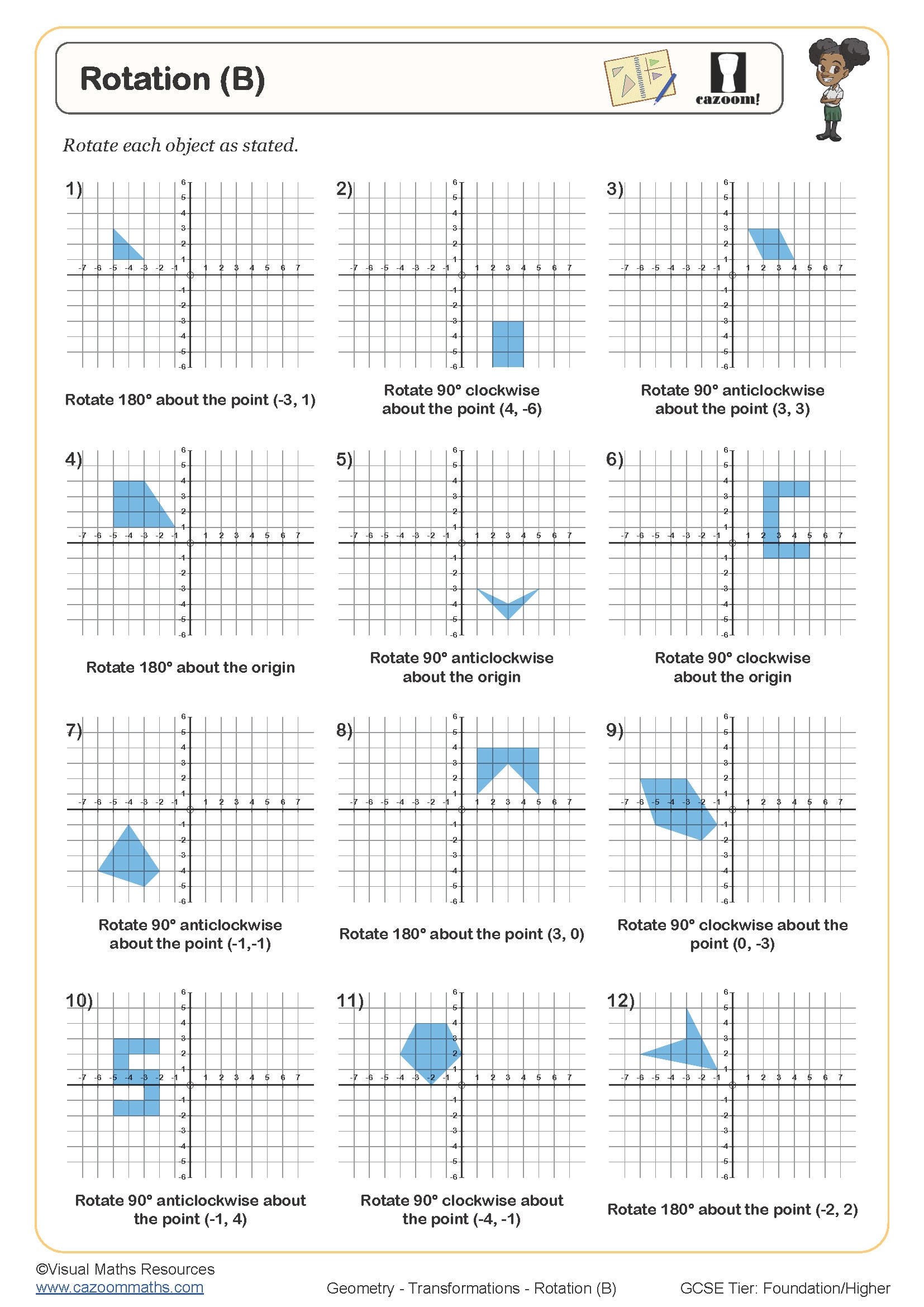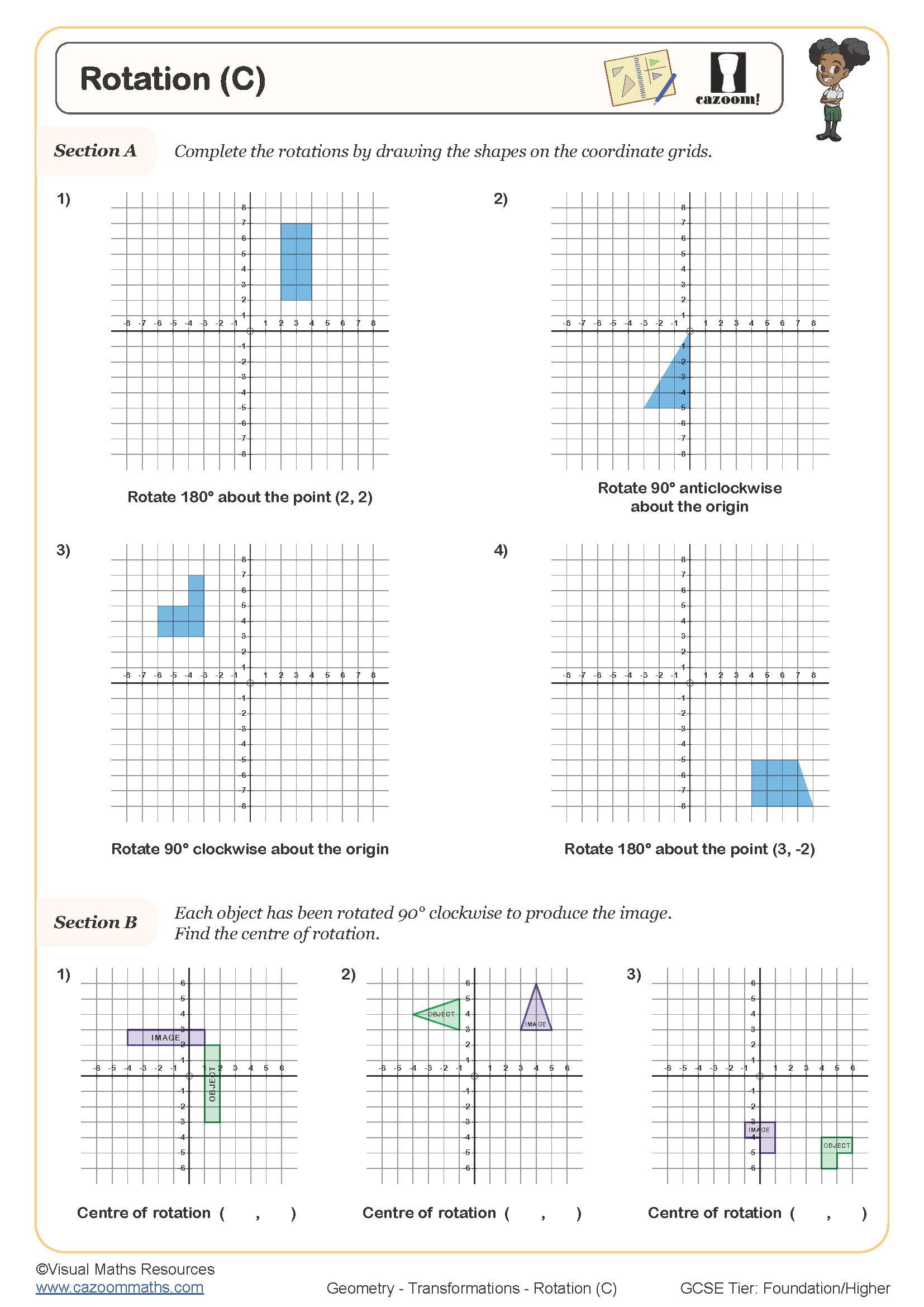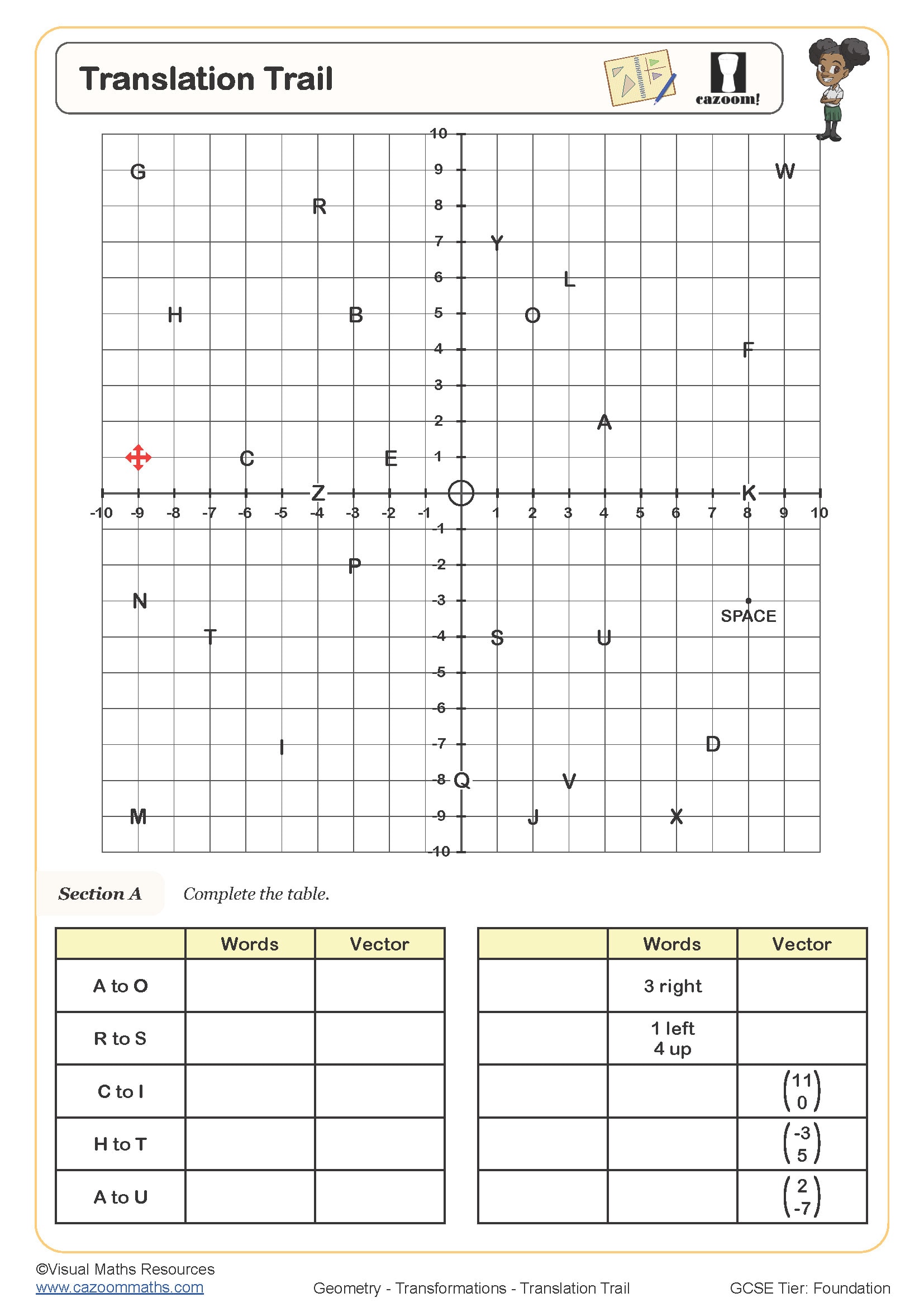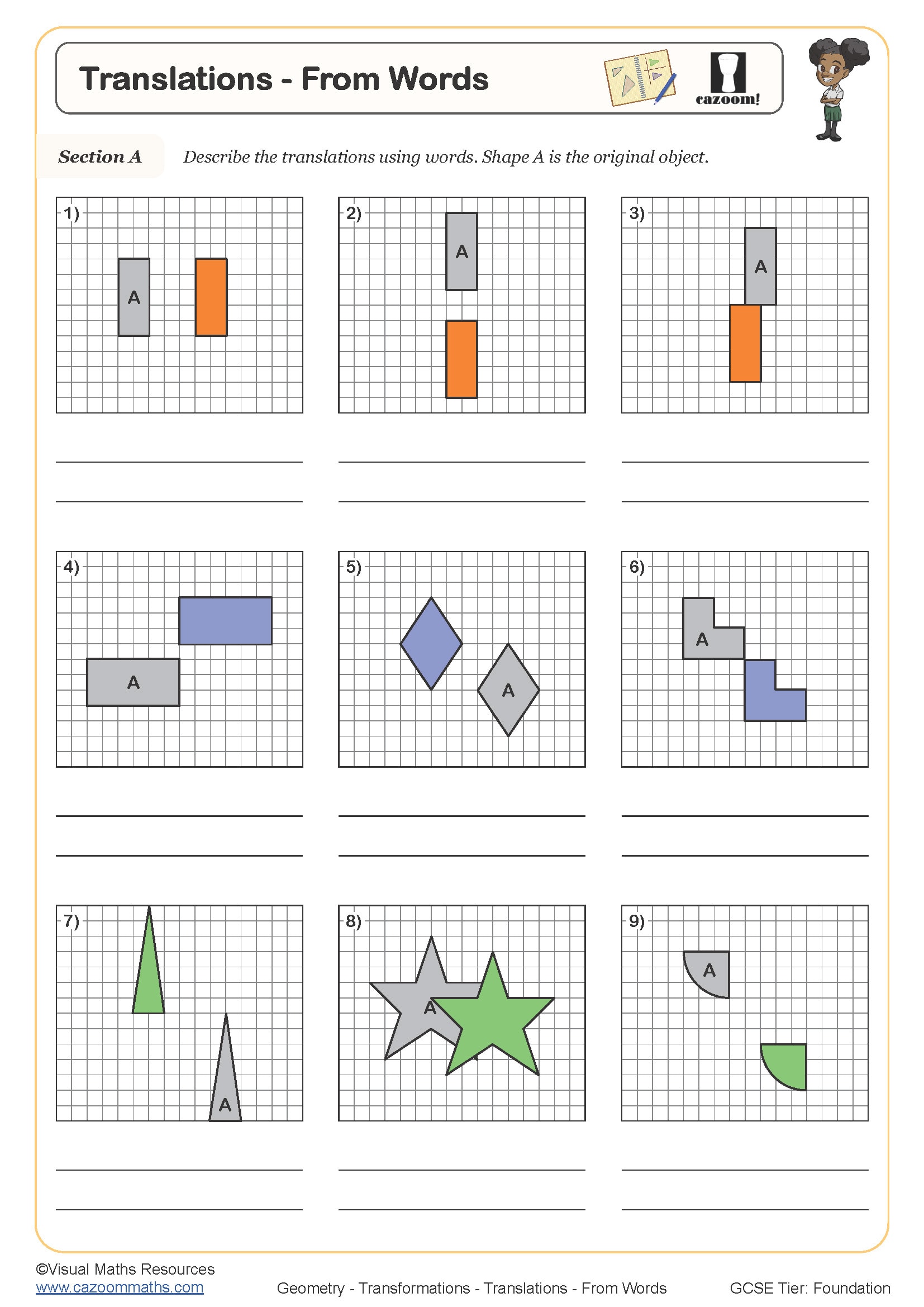Year 9 Transformations Worksheets
Improve Both Confidence and Accuracy With Our Printable Year 9 Transformations Worksheets
Working with transformations marks a significant leap from basic geometric movements to sophisticated coordinate work expected at GCSE level. The structured worksheets enable students to build their precision skills and algebraic thinking abilities, which will help them solve advanced problems. Students who practice transformations regularly build their spatial reasoning abilities, which enable them to apply geometric concepts to practical design work, engineering projects, and technological systems. The methodical approach to teaching these subjects helps students avoid knowledge deficiencies, which would negatively affect their understanding of trigonometry and vectors later on. The progression from individual movements to combined movements in the sequence shows how students build their mathematical understanding during Key Stage 3.
Specific learning benefits include:
• Master's vector notation for translations
• Strengthens coordinate precision skills
• Develops matrix transformation understanding
• Builds competence with negative scale factors
• Links algebra to geometric concepts
• Improves spatial visualisation abilities
• Creates a foundation for A-level mathematics
What Students Practise Step by Step With KS3 Geometry Activities
The worksheets begin with grid paper examples, followed by coordinate axes pictures and conclude with abstract descriptions of algebraic transformations. The resources provide worked solutions that show the mathematical logic for each step so students can learn both the procedures and the underlying reasons for their effectiveness.
The worksheets in this collection include:
• Reflections in Horizontal and Vertical Lines — practising reflections in the x-axis and y-axis
• Reflections in Diagonal Lines — working with y=x and y=-x reflections
• Rotations About the Origin — mastering 90°, 180° and 270° rotations
• Rotations About Any Point — rotating shapes around different centres
• Translations Using Vectors — applying column vectors to move shapes
• Enlargements with Positive Scale Factors — scaling from various centres
• Enlargements with Negative Scale Factors — understanding inverted enlargements
• Describing Single Transformations — identifying transformation types and parameters
• Combined Transformations — applying multiple transformations in sequence
• Inverse Transformations — finding transformations that reverse given movements
Trusted by Educators: Why Parents Value Year 9 Transformations Worksheets
These worksheets eliminate hours of preparation whilst maintaining the high standards expected in Year 9 mathematics classrooms. The differentiated structure allows teachers to deliver challenging content to advanced students at the same time as providing additional practice for students who need help with fundamental concepts. The combination of clear grid layouts with consistent notation systems allows students to focus on mathematical reasoning because they eliminate the need to interpret instructions. The current teaching standards for secondary mathematics education establish procedural fluency and conceptual understanding as essential learning elements for students at the same level. The Cazoom Maths resources work well with current lesson plans because they provide dependable materials that follow national curriculum standards and assessment protocols.
Real Life Transformations Skills in Engineering, Design and Technology
The ability to understand transformations enables people to work in computer graphics, architecture, and manufacturing, as these fields require precise spatial manipulation of objects. The fundamental mathematical concepts serve as the basis for all operations from video game creation to robotic system development.
• Computer animation relies on transformation matrices
• Architectural software uses reflections for symmetrical designs
• Manufacturing robots apply rotations for assembly processes
• GPS navigation calculates translations between coordinates
• 3D printing software scales models using enlargements
• Mirror manufacturing depends on reflection principles
• Satellite imagery requires geometric transformations
• Fashion design software transforms pattern pieces
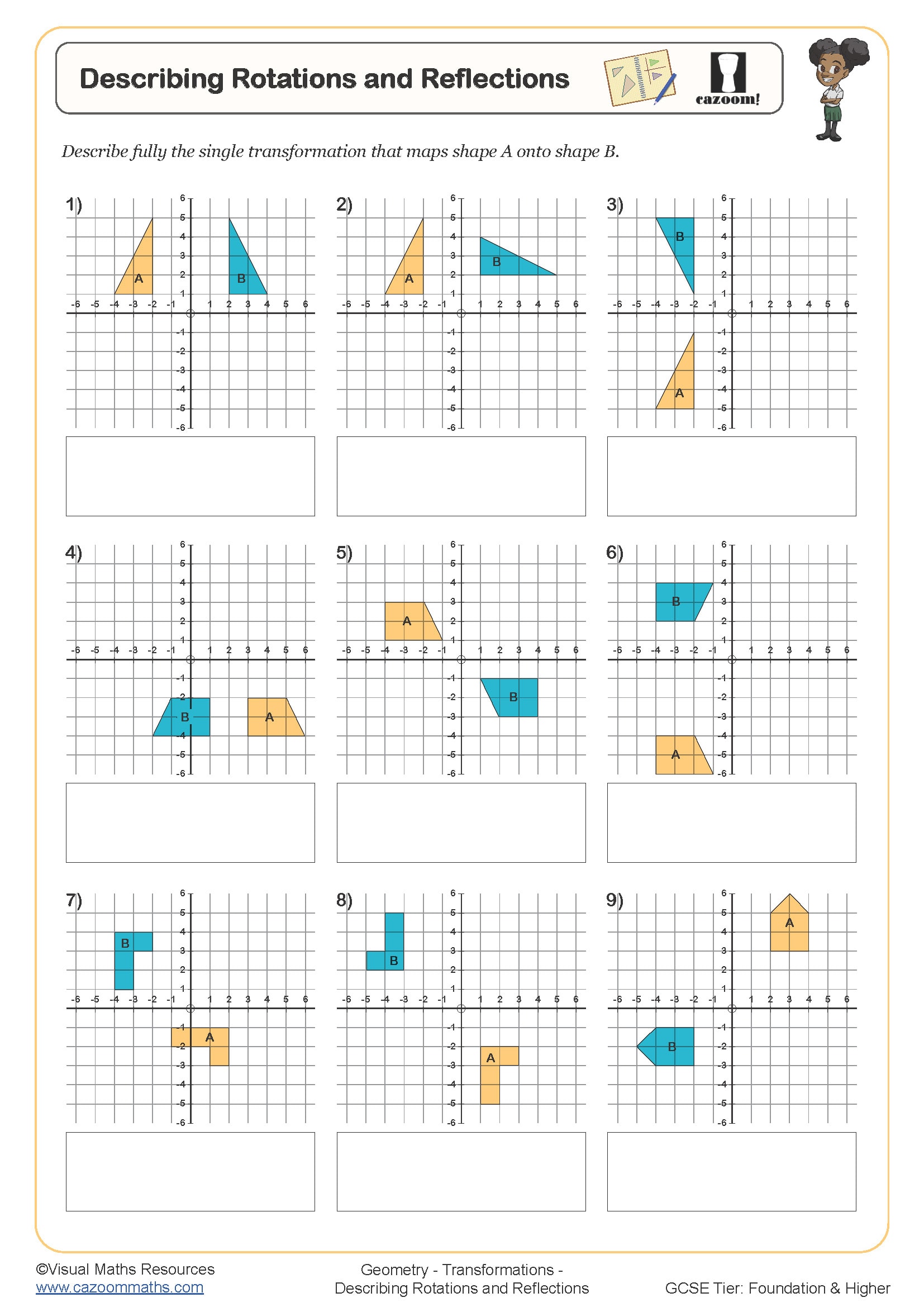
-Worksheet.jpg?w=3840)
-Worksheet.jpg)
